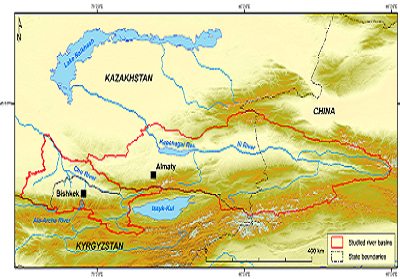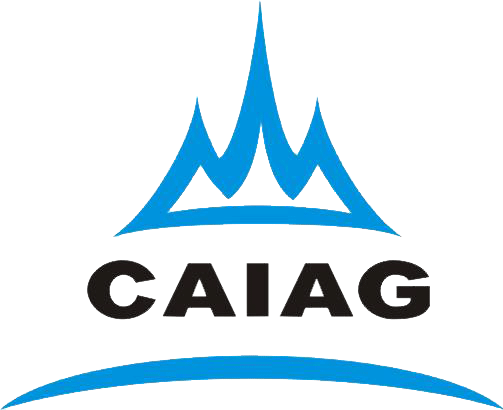Changes in Glacier and Snow‐melt runoff components in Central Asia and societal Vulnerability

Changes in Glacier and Snow‐melt runoff components
in Central Asia and societal Vulnerability GlaSCA‐V
Meltwater from glaciers and seasonal snow cover substantially feeds Central Asian rivers. The riparian
states use the water for economic activities such as irrigated agriculture and hydropower generation.
Depending on the type and intensity of water use, the societies exhibit a varying vulnerability to changes
in runoff availability and regimes. Against the background of global climate change, shrinkage of glaciers
and changes in snow cover climatology have been observed in the Central Asian High Mountains over
the past decades. However, the spatio‐temporal variability of the contributions of glacier and snow melt
to total river runoff has not been characterized quantitatively, so far, for the majority of the river basins.
Moreover, detailed assessments of the socio‐ecological vulnerability of the riparian communities and
economic sectors to past and potential future changes in runoff are rare in Central Asia, and
comprehensive multi‐scale assessments are lacking so far.
The German‐Central‐Asian consortium submitting this proposal is formed by 5 main partners and 2
associates partners with many‐years research experience in Central Asia: GFZ German Research Centre
for Geosciences, the Central Asian Institute of Applied Geosciences CAIAG (Kyrgyzstan), The Kyrgyz
Russian‐Slavic University (Kyrgyzstan), the Tian Shan Policy Center of the American University of Central
Asia (Kyrgyzstan), and the Regional Centre for Hydrology (Kazakhstan), as well as United Nations
University UNU‐EHS and Helmholtz Centre for Environmental Research (UFZ) as associated partners.
They aim at measuring and modelling the contributions of individual runoff components in selected
glacierised river catchments in the Northern Tien Shan. With the validated hydrological models, reliably
reproducing individual runoff components, the attribution of past changes in runoff components and
investigation of potential future changes in intended. The geo‐scientific approach will be combined with
the assessment of the socio‐ecologic vulnerability of individual societal groups and economic sectors to
changes in water availability and runoff regimes. The development and evaluation of adaptation
measures will be carried out with focus on the resilience of the local communities to projected changes
in water availability. Special emphasis will be put on the training and qualification of young Central Asian
researchers.
The proposal at hand applies for a 3‐year regional research project within topic d) of this call:
consequences of environmental changes, climate change and natural hazards. The total funds requested
sum up to 505,000 EUR.




